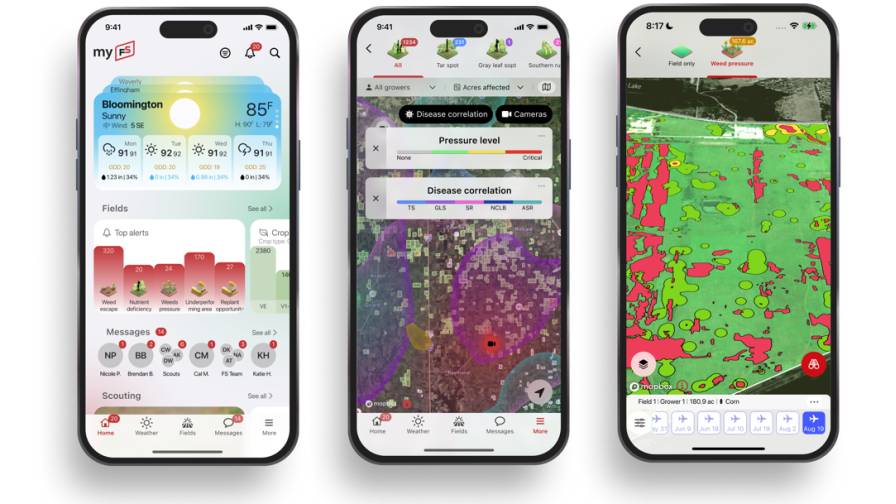Insecticide Segment Battles Supply Chain, Chlorpyrifos Loss
Pests come in unexpected forms. Insecticides are not excluded from supply chain troubles that have challenged herbicides and so many other categories and industries worldwide.
“We’re in new territory,” says Ryan Riddle, Atticus Business Unit Lead, South. Channel inventories are at all-time lows, growers are scrambling to get orders in extra early and product locked in the barn, while line times to get product formulated have been booked solid for 12 to 18 months in advance.
“Growers and retailers are putting in the early work, but there is nothing that can totally solve the supply obstacles that continue to emerge,” he says, adding, “If (your product) is sitting in a port and you’ve got line space and a formulator that’s been booked for nine months but the technical is not there, it causes mass chaos in production However, when growers and retailers actively engage, plan and act decisively, that creates more predictability and gives Atticus our best shot at better managing supply and production to meet the agronomic needs of growers.”
According to a source who wishes to remain unnamed, raw and inert ingredient shortages won’t hit every insecticide. Bifenthrin and lambda are among those that will likely be affected. The source said that because bifenthrin requires less acid than lambda-cyhalothrin, it will be the more widely available of the two in 2022. And while other insecticides may be more readily available, prices are expected to be up.
Drake Copeland, Technical Service Manager at FMC, says his company is well positioned to meet demand — but then comes the tricky part. If other major manufacturers are struggling, it will impact everyone at some point.
“It’s potentially not just one manufacturer’s problem — if they don’t have supply, end users are going to look elsewhere,” Copeland tells CropLife®. “We feel good about our situation. We may get business we haven’t had in the past because growers and retailers might need to find alternative options due to the prospects of others not being able to supply the market. It’s the unknown.”
Copeland describes his shock at some of the supply issues he witnessed over the past year — such as missing simple components, like caps or cardboard, preventing product from being delivered.
“This is not a panic statement,” Riddle says, “but there could be growers out there who don’t get the chemistry they want this year. I’m not saying that there’s not another solution that exists in that space that they can use, but they may not be able to get exactly what they want or in the quantity they want.”
Copeland offers a bit of sound advice: “This year may be a year to look into the literature and do some research. If plan A doesn’t work, let’s look at plan B, C, and D. It never hurts to plan for multiple scenarios going into the season. This year would be a great one to reach out to agronomists and local retailers to see what other options there are.”
Down Chlorpyrifos
On top of the supply chain issue, the industry is also navigating the loss of chlorpyrifos — but in this case, it was not unexpected.
“It’s going to put additional pressure on both newer and older active ingredients in the insecticide space. Anytime the industry loses a weapon, like we have with chlorpyrifos, the battle is going to be more cumbersome to win,” Riddle explains, naming bifenthrin and acetaminophen as two potential alternatives. Sticker shock, too, could likely be part of the process of changing up insect management plans.
In terms of changing pest pressures, he points to rising stinkbug pressure in corn in the Carolinas, and the expectation of higher bifenthrin demand to treat it.
For stinkbugs and other pests for which existing products no longer provide effective control, Syngenta is debuting Plinazolin, a new active ingredient with a novel mode of action (IRAC Group 30). The product provides an effective solution in resistance management strategies and replaces older, less effective chemistries. The sunlight stability and rain-resistant properties of Plinazolin technology allow for longer spray intervals and fewer applications aimed at improving crop productivity and quality, according to Syngenta.
“The launch of this new technology is a result of our ongoing commitment to investing in the long-term development of innovative and effective solutions that increase crop productivity in an environmentally sustainable and responsible way,” says Jon Parr, President Global Crop Protection at Syngenta. “Pests and diseases are a continually evolving threat, and the changing environment makes it even harder for farmers to grow their crops.”
Plinazolin technology will deliver insect control on stinkbugs, mites, thrips, caterpillars, flies, and beetles. It will be commercialized in more than 40 countries and in over 40 crops, including soybean, corn, rice, and a wide range of fruits and vegetables, according to Syngenta. While it is to be marketed first in Argentina, further registrations will follow over the next two to five years.
Fall Armyworm, Rootworm Control
In West Texas, the miticide market — where Atticus plays heavily — saw less pressure in corn due to a cooler, wetter summer than the prior two years. At the same time, the weather flared more bollworms in cotton and headworm in milo.
The fall armyworm invasion of 2021 caused late-season issues. Copeland recommends a chemistry with a residual, such as Vantacor, to avoid the expense of spraying a pyrethroid multiple times.
Dr. Erin Hodgson, professor and Ashley Dean, education extension specialist with Iowa State University, write that if the threshold (two or three caterpillars per square foot) is met, consider cutting the field; baling the hay quickly will ensure the caterpillars won’t continue to feed.
“If an application is warranted, timing is critical for effective larval suppression,” according to Hodgson and Dean. “Insecticide applications for control of fall armyworm larvae are most effective when the caterpillars are small (less than ½ inch long) and when made late while fall armyworms are actively feeding. Pyrethroids are typically a good option, but other states have noted minimal efficacy in some fields. Use high volume and pressure to create small droplets that ensure contact with the larvae. Continue to scout for migrating larvae until frost.”
The resurgence of corn rootworm in the Midwest in the past couple of years will continue to challenge growers. Effective control takes an integrated approach, starting with a hybrid with Bt technologies and an in-furrow insecticide.
“When they start emerging and flying into your corn fields around flowering or R1, that’s when adults are laying eggs for next year; if you don’t control them then it’s a numbers game,” Copeland says. “They’ll come in the corn crop in summer, go down into the soil and be there for next year.” Applying a foliar insecticide, such as Steward, a Group 22 with multiple weeks of residual activity will offer solid control, he says. “It’s a multifaceted approach.”





